You’ll discover that indoor ferns offer more variety than you might expect, with options suited for every room and light condition in your home. These versatile plants range from compact varieties that fit on windowsills to dramatic specimens that can cascade several feet from hanging baskets. While all ferns share certain care requirements, each species brings its own unique characteristics; some thrive in bright, indirect light while others prefer shadier spots.
Contents
- 1 1. Boston Fern
- 2 2. Bird’s Nest Fern
- 3 3. Maidenhair Fern
- 4 4. Holly Fern
- 5 5. Staghorn Fern
- 6 6. Autumn Fern
- 7 7. Button Fern
- 8 8. Lemon Button Fern
- 9 9. Kangaroo Fern
- 10 10. Rabbit’s Foot Fern
- 11 11. Japanese Painted Fern
- 12 12. Hart’s Tongue Fern
- 13 13. Silver Lace Fern
- 14 14. Asparagus Fern
- 15 15. Kimberly Queen Fern
1. Boston Fern
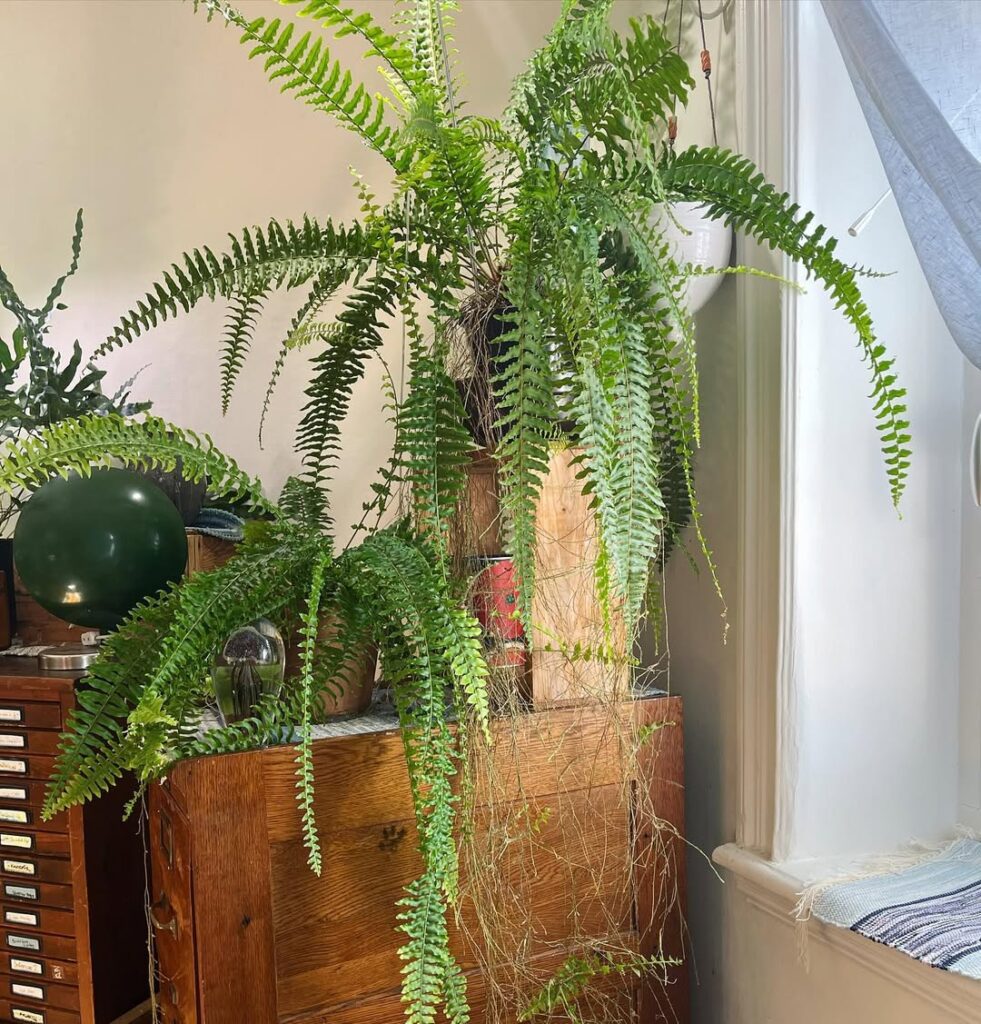
The Boston Fern (Nephrolepis exaltata) is one of the most popular and adaptable indoor ferns, known for its graceful, arching fronds with small leaflets that create a fountain-like appearance. This classic houseplant can grow up to 3 feet tall and wide, making it perfect for hanging baskets or pedestals. Its reliable growth pattern and air-purifying qualities have made it a timeless choice for indoor gardening since the Victorian era.
- Light: Bright, indirect light; avoid direct sunlight which can scorch leaves
- Water: Keep soil consistently moist but not waterlogged; mist regularly to maintain humidity
- Soil: Well-draining, rich potting mix with high organic content
- Temperature: 60-75°F (15-24°C)
- Humidity: High humidity (50% or higher)
- Fertilizer: Feed monthly with balanced liquid fertilizer during growing season
- Pot Type: Container with good drainage holes
- Repotting: Every 2-3 years or when roots become crowded
2. Bird’s Nest Fern

The Bird’s Nest Fern (Asplenium nidus) is a striking tropical plant known for its distinctive wavy, bright green fronds that grow in a rosette pattern resembling a bird’s nest. Unlike typical ferns with delicate, divided leaves, this species features simple, undivided fronds with a prominent black midrib. The fronds emerge from a central crown and can grow up to 2-4 feet long, creating an elegant, architectural presence in indoor spaces.
- Light: Moderate to bright indirect light; avoid direct sunlight which can burn leaves
- Water: Keep soil consistently moist but not waterlogged; water when top inch of soil feels dry
- Humidity: Prefers high humidity (50-80%); benefits from regular misting or humidity tray
- Temperature: 70-80°F (21-27°C); minimum 55°F (13°C)
- Soil: Well-draining, rich potting mix with high organic content
- Fertilizer: Feed monthly during growing season with balanced, water-soluble fertilizer
- Container: Pot with adequate drainage holes
- Special Needs: Avoid getting water in center crown to prevent rot
3. Maidenhair Fern
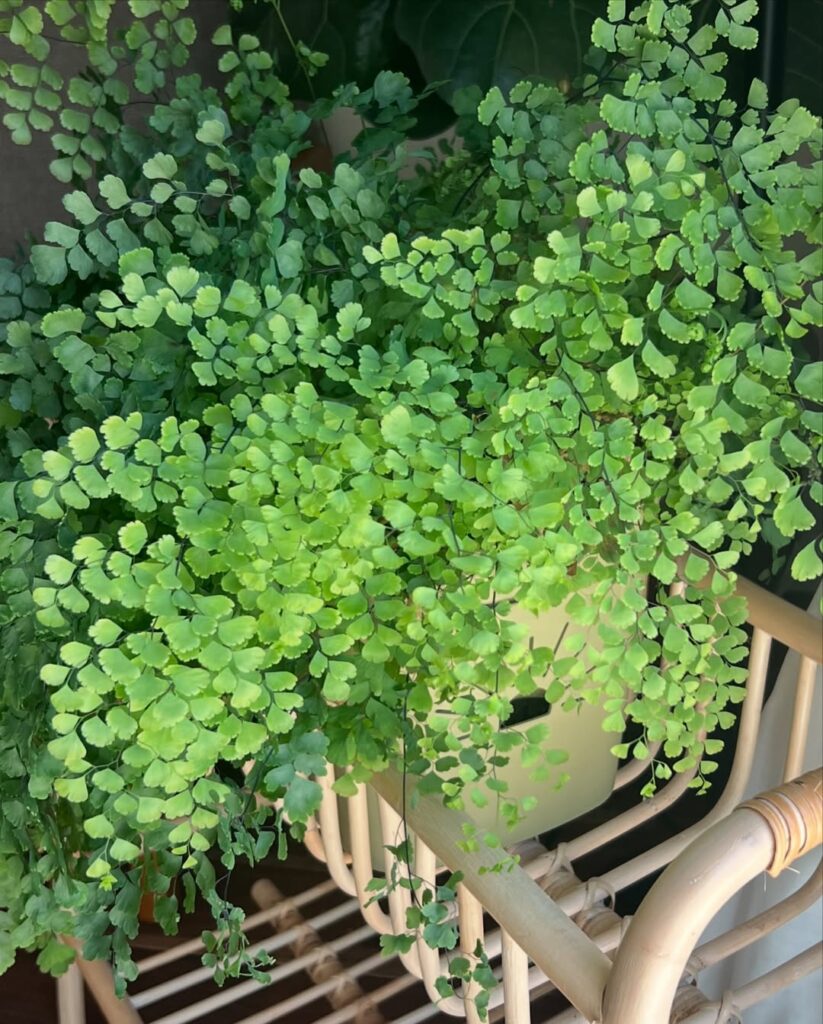
The Maidenhair Fern (Adiantum spp.) captivates indoor gardeners with its delicate, lacy fronds and fine, black stems that create an ethereal, floating appearance. These elegant ferns feature bright green, fan-shaped leaflets arranged in a distinctive cascading form that adds a soft, graceful touch to any indoor space. Despite their fragile appearance, Maidenhair ferns can thrive indoors when their specific care requirements are met.
- Light: Bright, indirect light; avoid direct sunlight which can scorch leaves; morning sun is tolerable
- Water: Keep soil consistently moist but not waterlogged; mist frequently to maintain humidity
- Soil: Well-draining, rich potting mix with high organic content
- Humidity: Requires 40-50% humidity or higher; use humidity trays or humidifiers
- Temperature: 60-75°F (15-24°C); protect from cold drafts
- Fertilizer: Feed monthly during growing season with balanced, water-soluble fertilizer at half strength
- Container: Use pots with drainage holes; plastic or glazed ceramic containers help retain moisture
4. Holly Fern

The Holly Fern (Cyrtomium falcatum) is a robust and attractive indoor plant known for maintaining its deep green color throughout the year. Its distinctive fronds feature glossy, leathery leaflets that resemble holly leaves, giving the plant its common name. This evergreen fern can grow up to 2 feet tall and wide, making it an excellent choice for indoor spaces where year-round foliage is desired.
- Light: Thrives in medium to bright indirect light; avoid direct sunlight
- Water: Keep soil consistently moist but not waterlogged; water when top inch of soil feels dry
- Soil: Well-draining, rich potting mix with high organic content
- Humidity: Prefers moderate to high humidity; mist regularly or use a humidity tray
- Temperature: 60-75°F (15-24°C)
- Fertilizer: Feed monthly during growing season with balanced, water-soluble fertilizer
- Soil pH: Slightly acidic to neutral (6.0-7.0)
5. Staghorn Fern
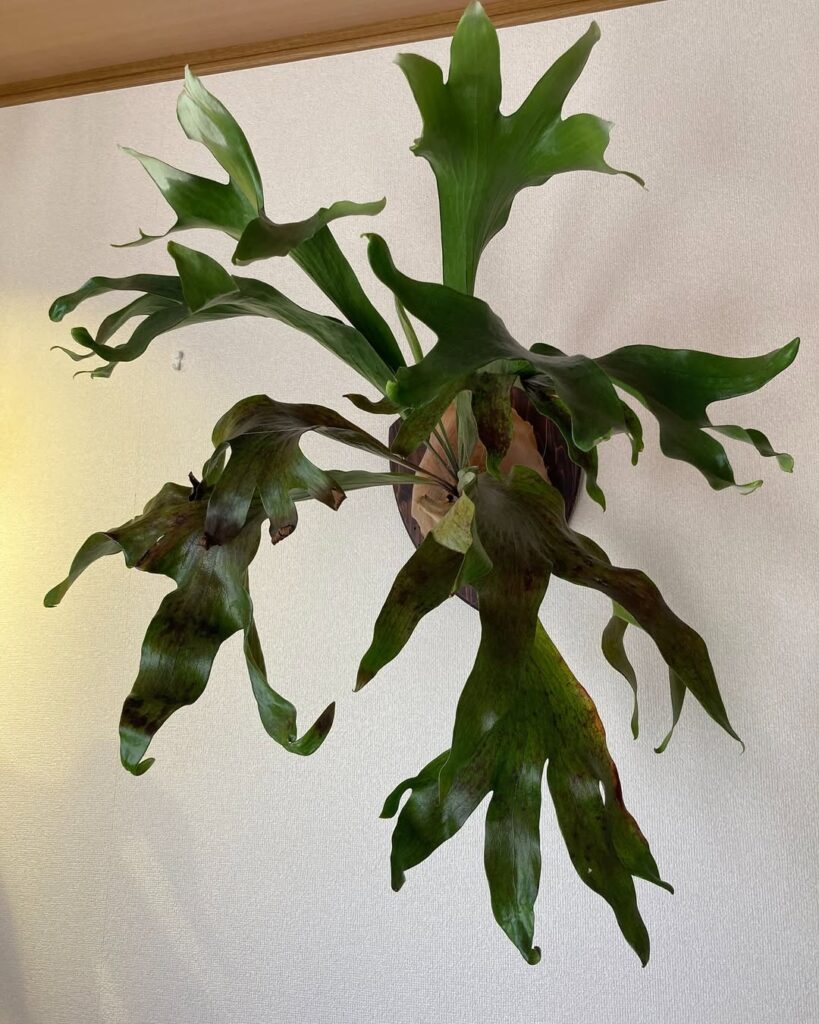
Staghorn ferns (Platycerium) are unique epiphytic plants that naturally grow attached to trees rather than in soil. In their native habitat, they anchor themselves to tree bark using a shield-like base frond while their distinctive antler-shaped fertile fronds arch outward and downward. In home cultivation, they’re typically mounted on wooden boards, bark slabs, or displayed in hanging baskets with minimal growing medium.
- Light: Bright, indirect light; avoid direct sun exposure except for morning light
- Water: Weekly misting of the entire plant; soak mounting board or growing medium thoroughly when dry
- Humidity: Prefers 50-60% humidity; benefits from regular misting
- Temperature: 60-80°F (15-27°C)
- Growing Medium: Minimal; mix of sphagnum moss, orchid bark, and peat for mounting
- Mounting: Wooden boards, tree fern plaques, or cork bark
- Fertilizer: Diluted balanced fertilizer applied monthly during growing season
- Air Circulation: Good air movement without cold drafts
6. Autumn Fern

The Autumn Fern (Dryopteris erythrosora) is known for its dramatic color changes throughout the growing season. New fronds emerge in coppery-pink to bronze hues, gradually maturing to green in summer, then taking on rusty orange and reddish tones in autumn. This color-changing characteristic makes it a particularly striking indoor specimen, providing visual interest year-round. The fronds typically grow in a vase-like form, reaching heights of 18-24 inches.
- Light: Bright indirect light; can tolerate moderate shade but needs some light for best color
- Water: Keep soil consistently moist but not waterlogged; water when top inch of soil feels dry
- Soil: Well-draining, rich potting mix with high organic content
- Humidity: Moderate to high; benefits from regular misting or humidity tray
- Temperature: 60-75°F (15-24°C); tolerates occasional cooler temperatures
- Fertilizer: Feed monthly during growing season with balanced liquid fertilizer
- Planting: Use pot with drainage holes; space plants 18-24 inches apart if grouping
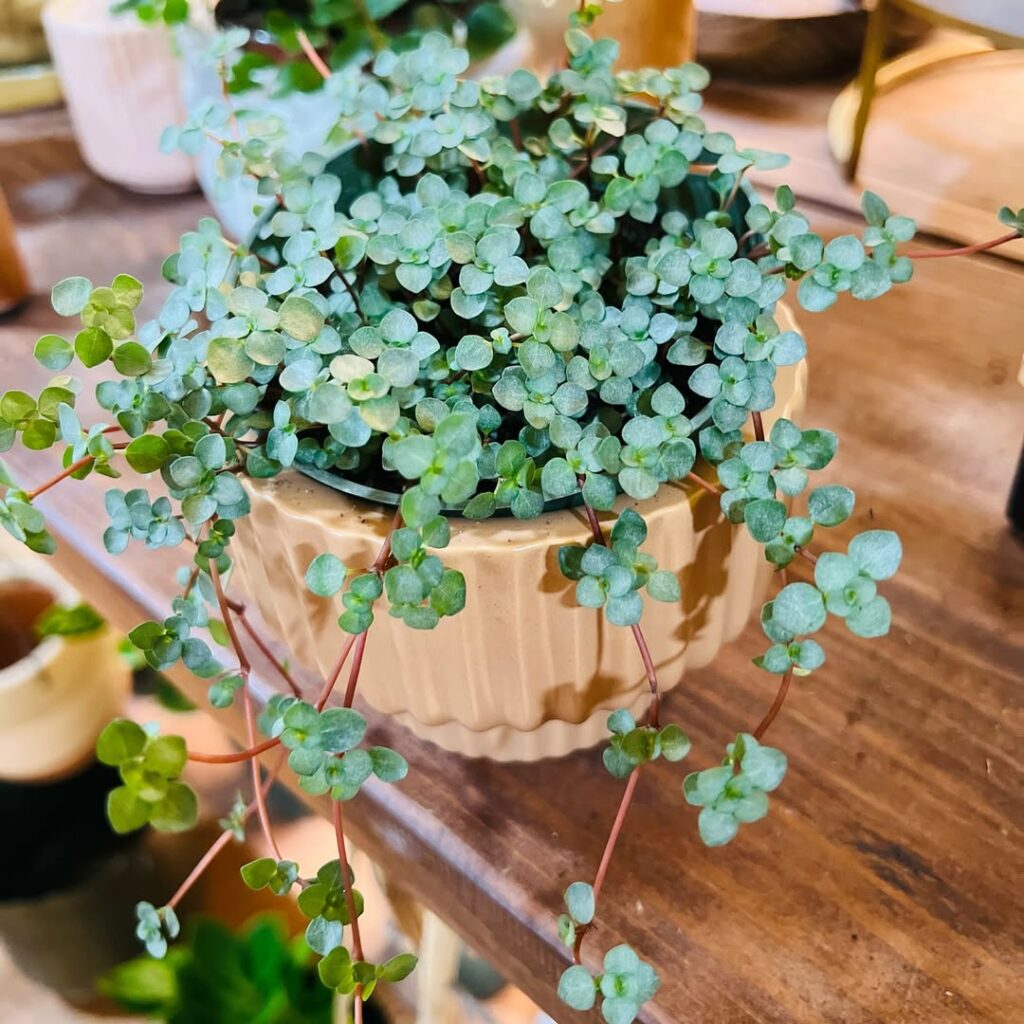
The Button Fern (Pellaea rotundifolia) is a charming, compact fern that typically grows 12-18 inches tall and wide, making it perfect for small spaces. Its distinctive round, button-like leaflets grow along dark stems in an orderly fashion, creating a delicate, cascading appearance. Unlike some larger ferns that can become unruly, the Button Fern maintains a neat, manageable shape and grows at a slow to moderate pace.
- Light: Bright, indirect light; avoid direct sunlight that can scorch leaves
- Water: Keep soil consistently moist but not waterlogged; water when top inch of soil feels dry
- Soil: Well-draining, rich potting mix with added organic matter
- Humidity: Moderate to high humidity (50-70%); benefits from regular misting
- Temperature: 60-75°F (15-24°C)
- Fertilizer: Feed monthly during growing season with balanced, water-soluble fertilizer at half strength
- Container: Use pot with drainage holes; prefers slightly crowded roots
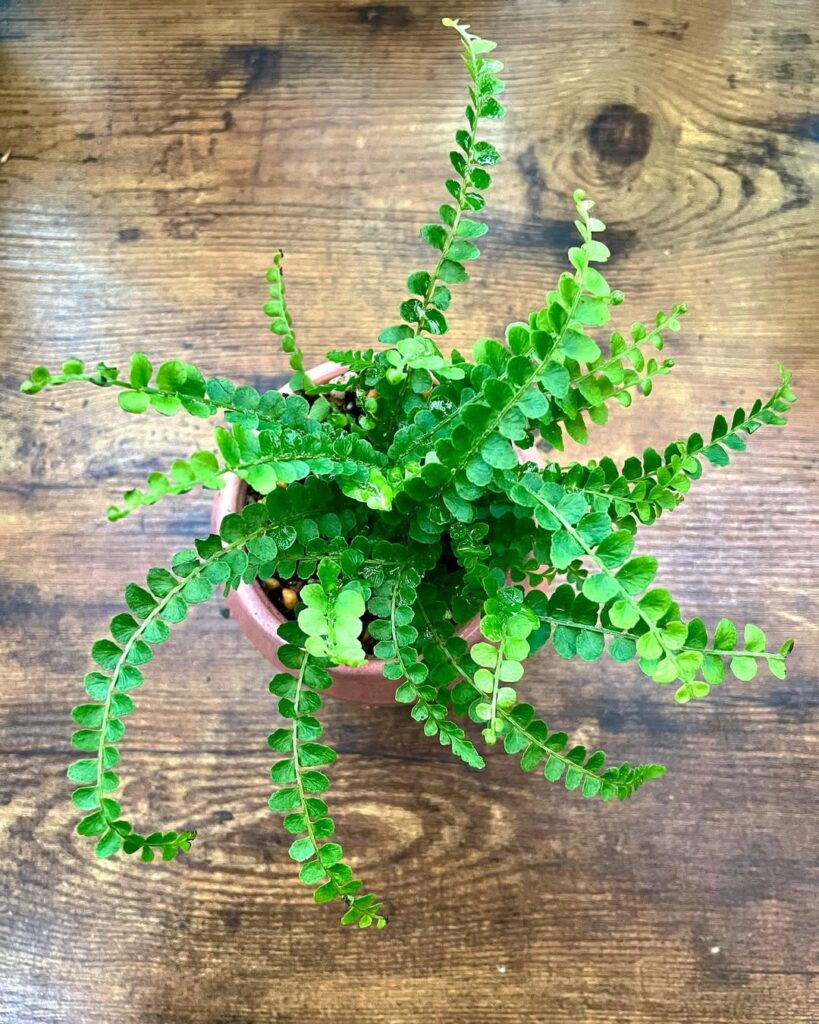
The Lemon Button Fern (Nephrolepis cordifolia ‘Duffii’) is a compact, charming variety that typically grows only 8-12 inches tall, making it perfect for small spaces. Its distinctive button-like leaflets are arranged along delicate fronds, creating a dense, rounded appearance. The name comes from the subtle citrus scent released when the leaves are crushed. This miniature fern maintains its diminutive size throughout its life cycle, requiring minimal pruning while providing consistent greenery.
- Light: Bright, indirect light; avoid direct sunlight; tolerates moderate shade
- Water: Keep soil consistently moist but not waterlogged; mist regularly to maintain humidity
- Soil: Well-draining, rich potting mix with high organic content
- Temperature: 60-75°F (15-24°C)
- Humidity: Minimum 50%; prefers higher humidity levels
- Fertilizer: Feed monthly with diluted balanced fertilizer during growing season
- Container: Small pot with drainage holes; ideal for terrariums
9. Kangaroo Fern
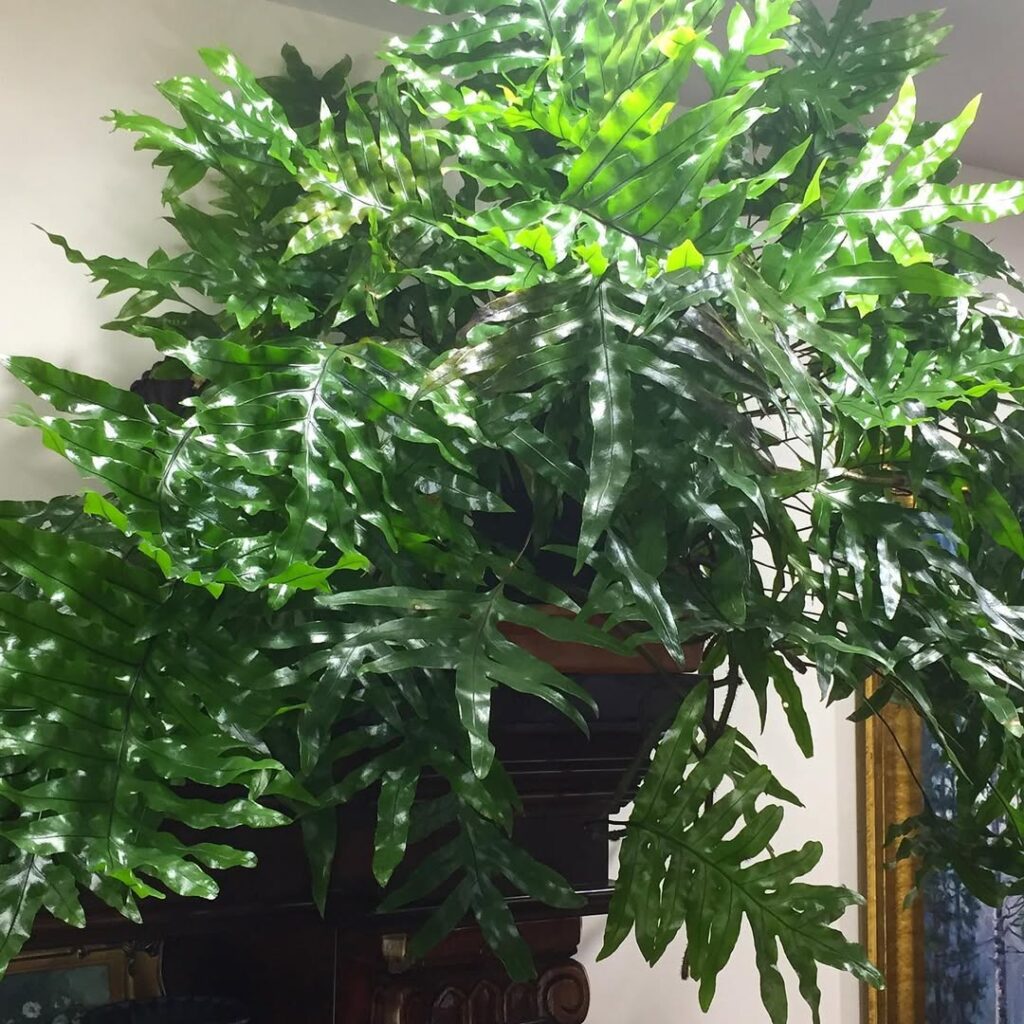
The Kangaroo Fern (Microsorum diversifolium) is a lush, spreading fern that forms dense mats of foliage through its creeping rhizomes. Its distinctive fronds have a leathery texture and grow in an overlapping pattern, creating a thick, full appearance that makes it an excellent ground cover or hanging plant. The fronds typically reach 6-12 inches in length and display a deep green color, while the plant’s spreading nature allows it to fill spaces effectively.
- Light: Bright indirect light; protect from direct sunlight; tolerates moderate shade
- Water: Keep soil consistently moist but not waterlogged; water when top inch of soil feels dry
- Soil: Well-draining, rich potting mix with high organic content
- Humidity: Prefers high humidity; mist regularly or use a humidity tray
- Temperature: 60-75°F (15-24°C)
- Fertilizer: Feed monthly during growing season with balanced, water-soluble fertilizer
- Container: Use containers with drainage holes; shallow pots work well due to spreading nature
10. Rabbit’s Foot Fern
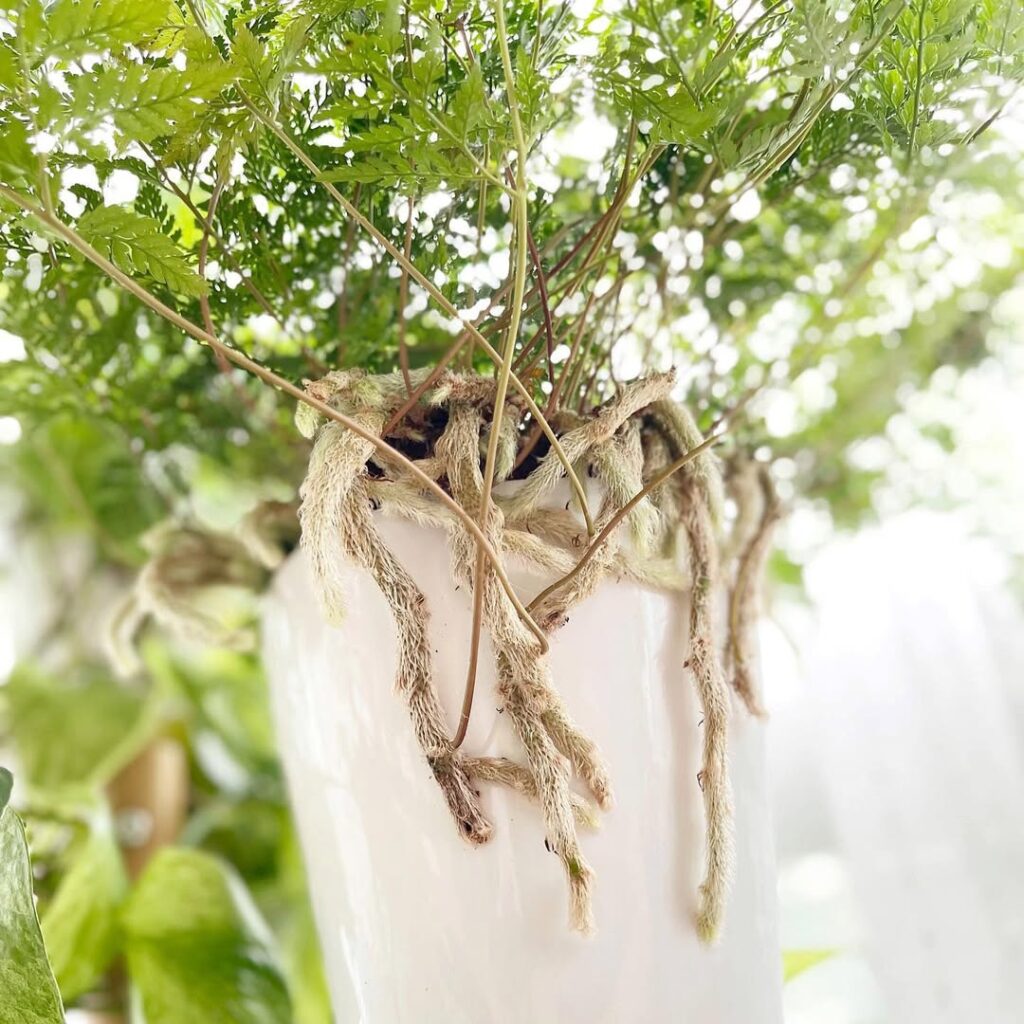
The Rabbit’s Foot Fern (Davallia fejeensis) displays unique fuzzy rhizomes that creep along the surface, resembling rabbit’s feet, which give this plant its common name. These furry stems climb and spread across surfaces, making the plant particularly attractive in hanging baskets where the rhizomes can cascade downward. As an epiphytic fern, it naturally grows on tree trunks and branches in its native habitat, using its creeping rhizomes to attach and climb.
- Light: Bright, indirect light; avoid direct sunlight
- Water: Keep soil consistently moist but not waterlogged; mist regularly for humidity
- Soil: Well-draining, organic potting mix rich in peat moss
- Temperature: 60-75°F (16-24°C)
- Humidity: High humidity (50% or higher)
- Container: Hanging baskets or mounted on bark; needs good drainage
- Fertilizer: Feed monthly during growing season with balanced liquid fertilizer diluted to half strength
- pH: 6.0-6.5
11. Japanese Painted Fern
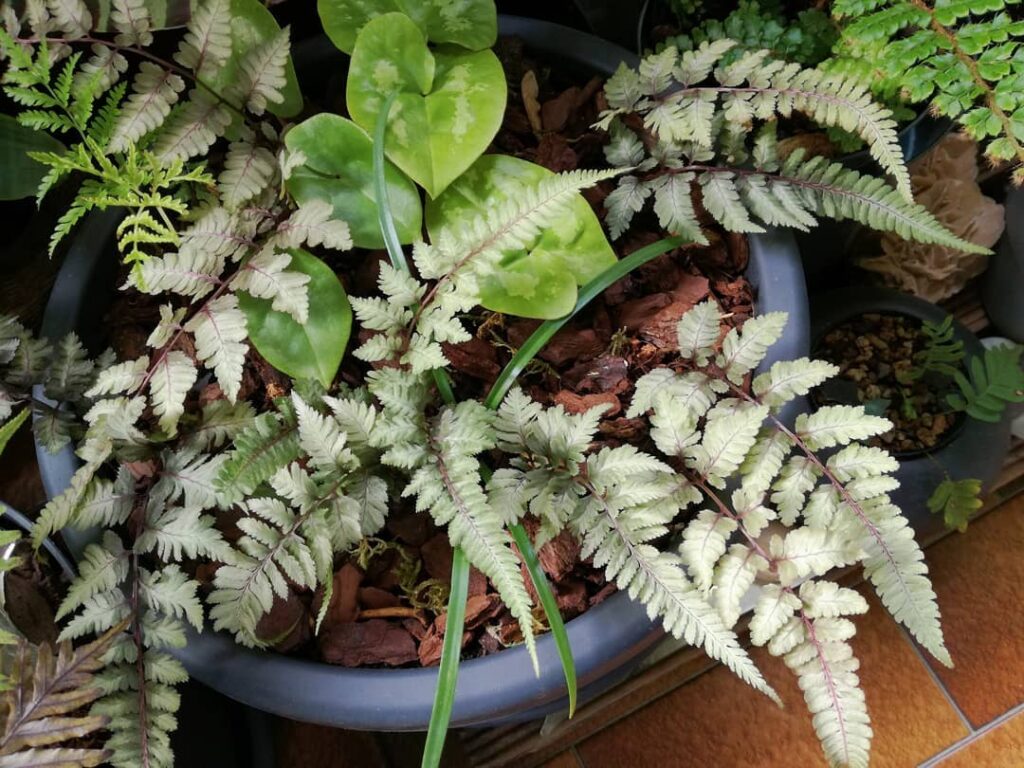
Japanese Painted Fern (Athyrium niponicum ‘Pictum’) is a stunning ornamental fern that features silvery-gray fronds with burgundy-purple highlights along the stems and central veins. This compact fern grows in graceful clumps reaching 18-24 inches tall, with delicate, arching fronds that create a metallic shimmer when light hits them. Its unique coloring intensifies in brighter light conditions, though direct sunlight should be avoided to prevent leaf burn.
- Light: Bright to moderate indirect light; morning sun acceptable; avoid hot afternoon sun
- Water: Keep soil consistently moist but not waterlogged; water when top inch of soil feels dry
- Soil: Rich, well-draining potting mix with high organic content
- Humidity: Prefers 50-60% humidity; mist regularly or use humidity tray
- Temperature: 60-75°F (15-24°C); tolerates cooler temperatures
- Fertilizer: Feed monthly during growing season with balanced, water-soluble fertilizer
- Container: Use pot with drainage holes; prefers shallow, wide containers
- Winter Care: Reduces growth in winter; reduce watering but don’t let soil dry completely
12. Hart’s Tongue Fern
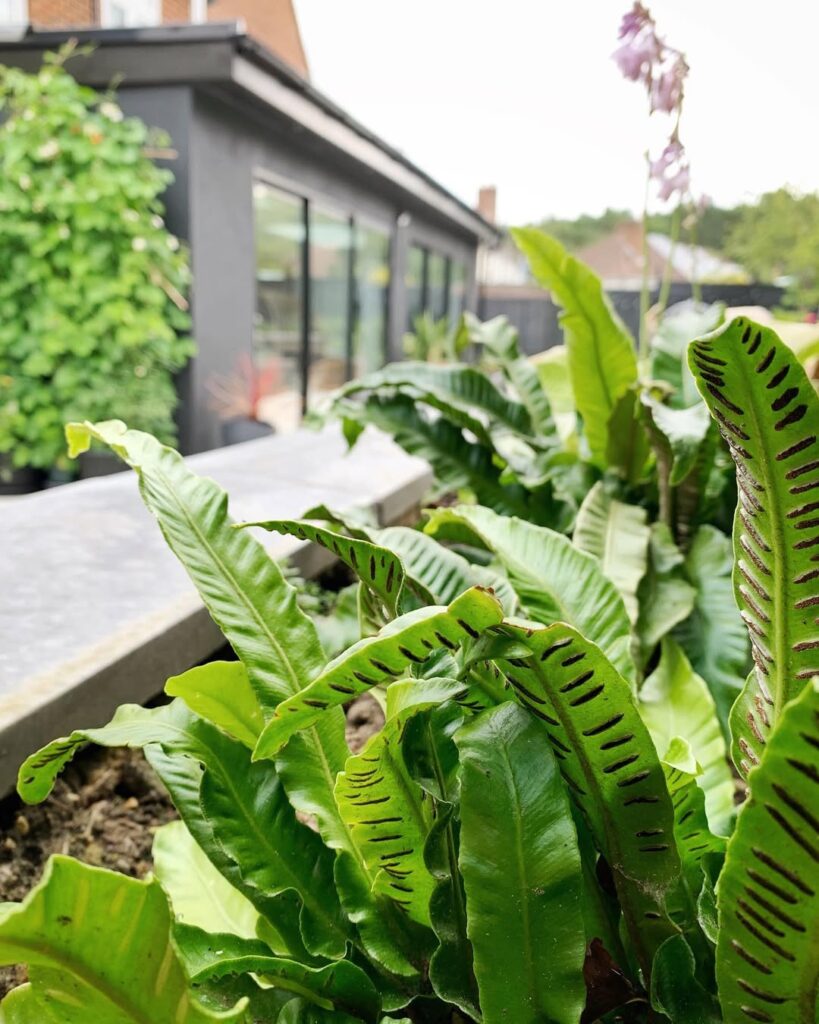
Hart’s Tongue Fern (Asplenium scolopendrium) is a distinctive evergreen fern known for its unique, elongated fronds that resemble bright green ribbons or straps. Unlike typical feathery fern varieties, its leaves are undivided and glossy, creating an elegant, architectural appearance that seems to glow when light hits its surface. The fronds emerge from a central crown and can grow up to 2 feet in length, making it an eye-catching specimen for indoor spaces.
- Light: Thrives in moderate to bright indirect light; avoid direct sunlight
- Water: Keep soil consistently moist but not waterlogged; water when top inch of soil feels dry
- Soil: Well-draining, humus-rich potting mix with added organic matter
- Humidity: Prefers high humidity levels (60-80%); benefits from regular misting
- Temperature: Ideal range between 60-75°F (15-24°C)
- Fertilizer: Feed monthly during growing season with balanced, water-soluble fertilizer
- Container: Pot with adequate drainage holes; prefers slightly cramped conditions
- pH: Slightly alkaline soil, ideally between 7.0-8.0
13. Silver Lace Fern

The Silver Lace Fern (Pteris ensiformis ‘Evergemiensis’) is a striking indoor plant known for its delicate, silvery-white variegation that creates a lace-like pattern on its fronds. This compact fern typically grows to about 12 inches tall, featuring bright green leaves with distinctive white striping along the center of each finger-like segment. Its unique coloring and moderate size make it an eye-catching addition to tabletops, shelves, and hanging baskets.
- Light: Bright, indirect light; avoid direct sunlight which can scorch leaves
- Water: Keep soil consistently moist but not waterlogged; mist regularly to maintain humidity
- Soil: Well-draining, peat-based potting mix
- Temperature: 60-75°F (16-24°C)
- Humidity: High humidity (50% or higher)
- Fertilizer: Feed monthly during growing season with balanced, water-soluble fertilizer
- Container: Use pots with drainage holes to prevent root rot
- pH: Slightly acidic soil (6.0-6.5)
14. Asparagus Fern
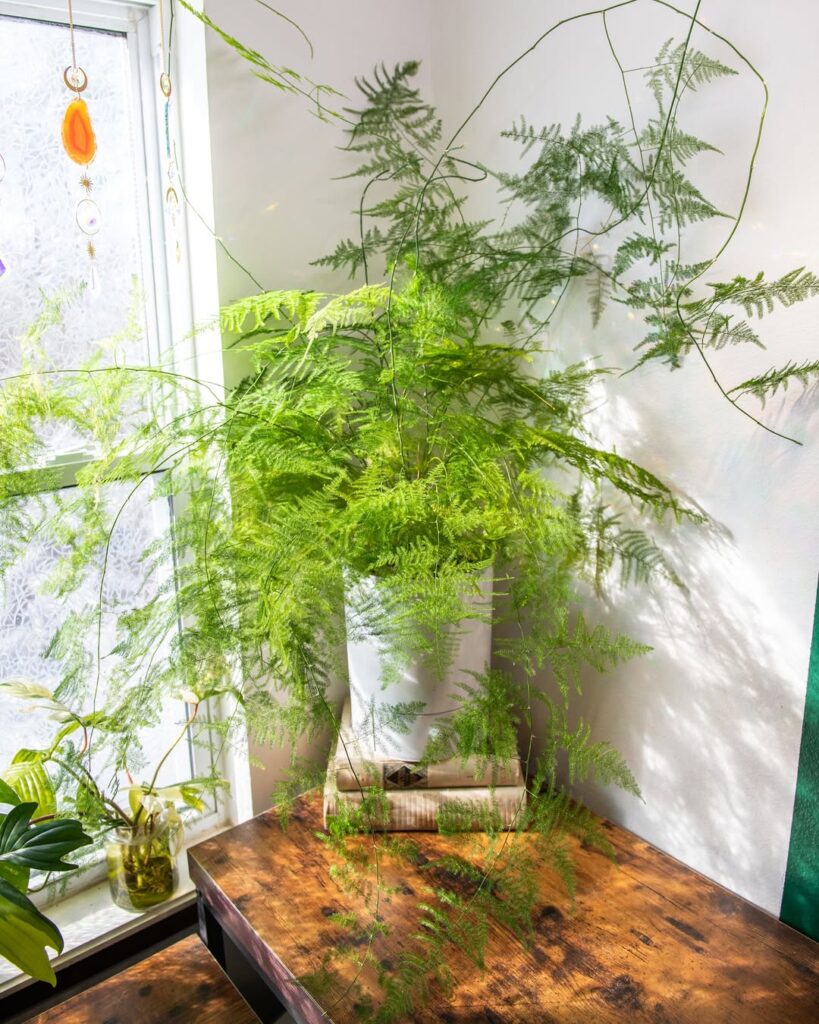
The asparagus fern creates elegant, cascading greenery with its delicate, feathery fronds that spill over container edges and hanging baskets. Despite its common name, it’s not a true fern but rather a member of the lily family, featuring soft, needle-like leaves that form graceful arching stems. This trailing plant adds a light, airy texture to indoor spaces and can reach lengths of 2-3 feet when properly maintained.
- Light: Bright, indirect light; can tolerate partial shade but avoid direct sunlight
- Water: Keep soil consistently moist but not waterlogged; mist regularly to maintain humidity
- Soil: Well-draining, rich potting mix with organic matter
- Temperature: 65-75°F (18-24°C)
- Humidity: Moderate to high humidity levels
- Fertilizer: Feed monthly during growing season with balanced liquid fertilizer
- Container: Use pots with drainage holes; ideal for hanging baskets
15. Kimberly Queen Fern
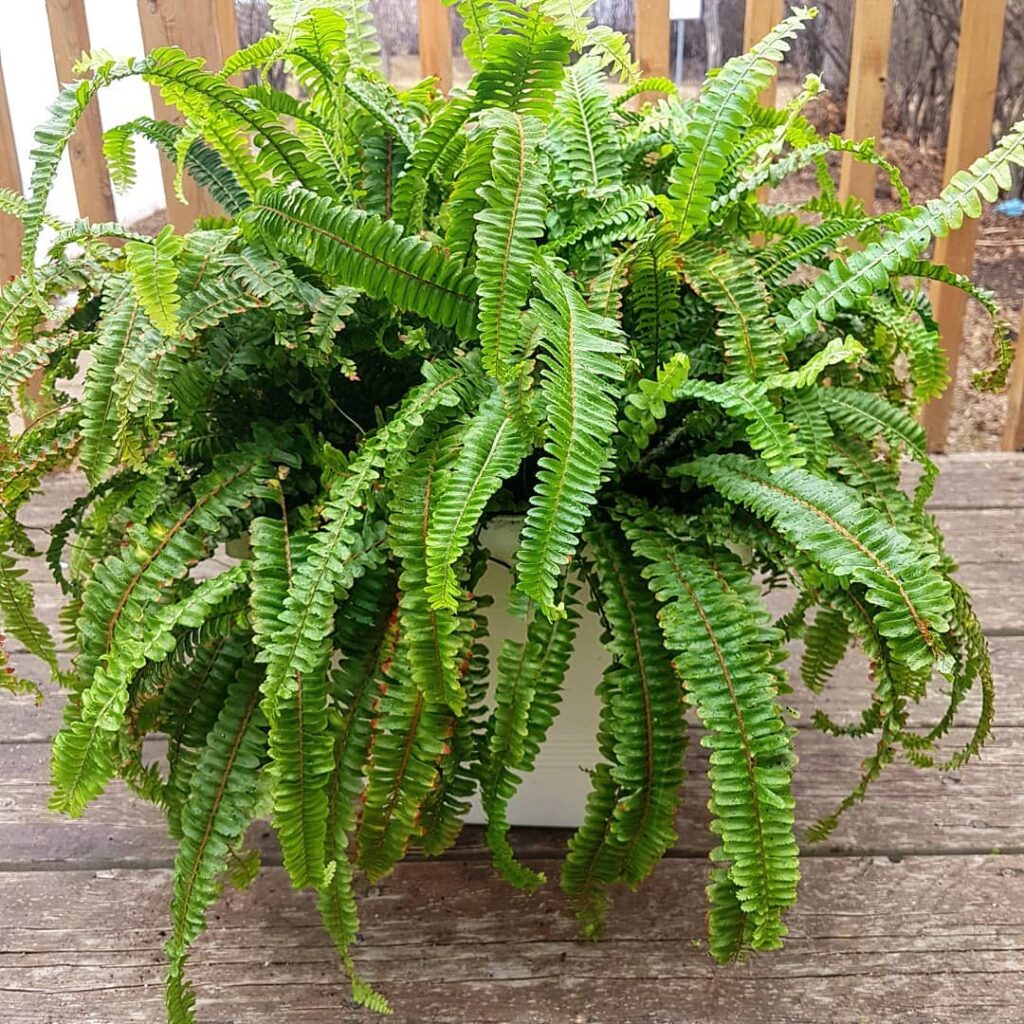
Kimberly Queen Fern (Nephrolepis obliterata) is a resilient, upright-growing fern known for its structured fronds that resist shedding, making it a low-maintenance choice for indoor spaces. Unlike its more delicate relative, the Boston Fern, this variety maintains a neat, compact shape, making it ideal for pots and decorative planters. Its rich green foliage adds a touch of lushness to any environment, thriving with consistent moisture and humidity.
- Light: Bright, indirect light; tolerates some shade but prefers well-lit areas
- Water: Water when the topsoil feels dry; avoid waterlogging
- Soil: Well-draining, organic-rich potting mix
- Temperature: 65-75°F (18-24°C)
- Humidity: Prefers moderate to high humidity levels
- Fertilizer: Feed every 6-8 weeks during the growing season with balanced liquid fertilizer
- Container: Use pots with drainage holes; great for indoor or outdoor planters
